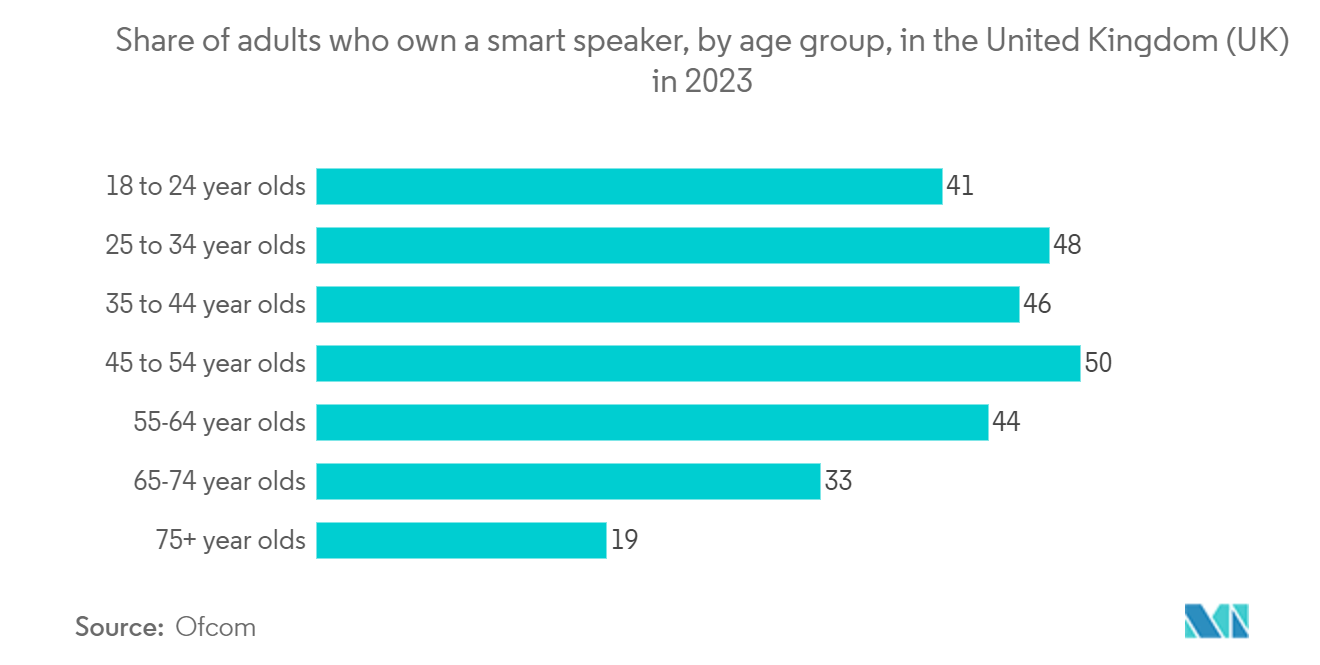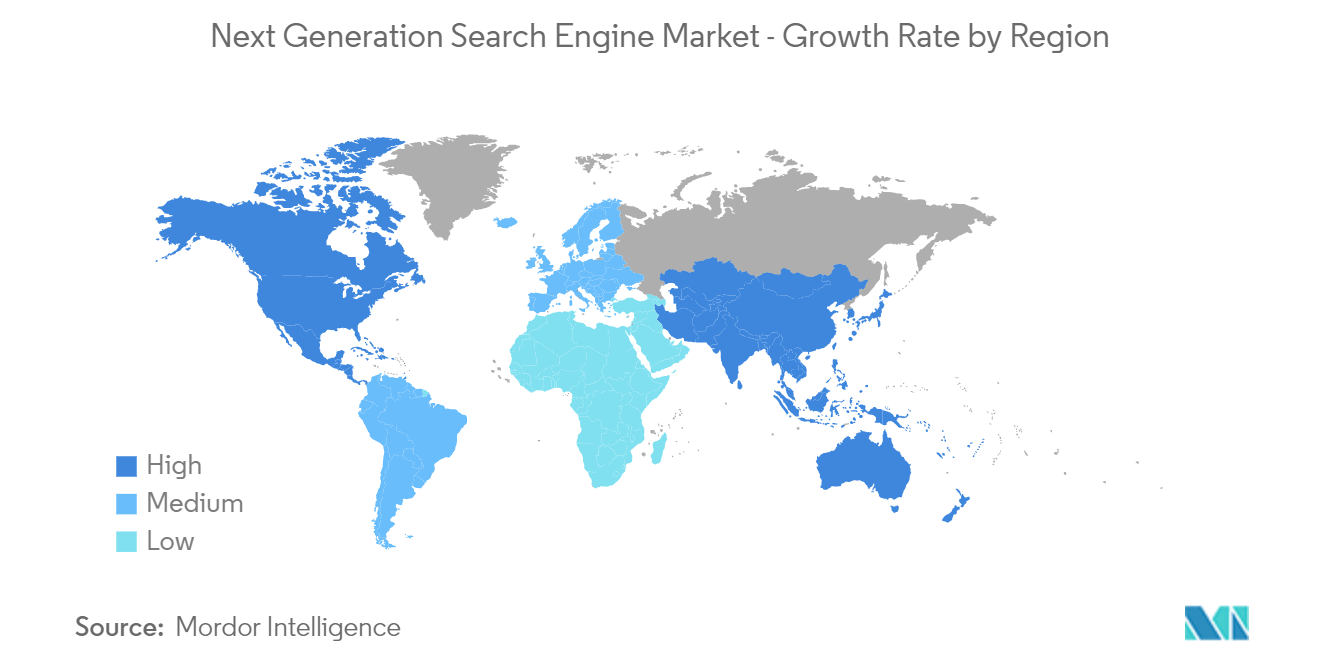Market Trends of Next Generation Search Engines Industry
Self Service and Personal Segment to Witness the Highest Growth
- Smart speakers in personal end-user verticals are expected to hold the majority share. The characteristics expected from a smart speaker nowadays include playing music and controlling smart home devices consisting of voice assistants ready to answer every question.
- The technological enhancements in the development of consumer applications resulted in the integration of smart homes or connected homes. Smart homes' development pushed end users to adopt mobile internet and fast broadband connections across households in the market.
- Voice-activated speakers have become part of people's routines. They provide the ability to use the technology while multi-tasking, as people speak more quickly than they can type (speed), and the increasingly "human" interfaces. Personalized responses are one of the famous use cases of voice search, which Google has attained to a large extent, as Google can know and guess the next question the users will most likely ask. On the other hand, Alexa cannot understand the context to the same extent as Google. Alexa relies on custom-built skills and protocols, whereas Google Assistant can understand specific user requests and further personalize the response.
- Voice users turn to their assistants to accomplish many tasks along their buying journeys, such as product research, price comparison, and adding to cart. A study from Adobe announced the consumer's usage of voice throughout their shopping journeys. The top three activities included product search/research (47%), creating shopping lists (43%), and price comparison (32%).
- The most well-known smart speakers are the Amazon Echo and Google Nest range of products, but there are plenty of third-party speakers, like the Sonos One, which comes with both Alexa and Google Assistant built-in.
- The United States remains a key market for the personal segment, especially voice assistant adoption. According to eMarketer, The number of voice assistants has risen from 103 million to 123 million over the last five years. According to the latest Smart Audio Report from NPR, 24% of Americans aged 18 years or above own at least one smart speaker. The average owner has more than one. A majority of Americans own Alexa. Since Amazon first introduced the Echo, it has become popular in the United States, and it continues to challenge top competitors.

Asia-Pacific Occupies the Largest Market Share
- The Asia-Pacific region currently holds the largest market share for the market studied. The demand for the products in the region, which is primarily from emerging economies, is expected to remain high. The major players are expected to focus chiefly on this region, with the youth as the target audience.
- China, India, Japan, South Korea, Singapore, and other populous nations with consumer product-based demand are expected to remain the target market as product demand in these countries continues to drive the market.
- Moreover, the growth of e-commerce across the world in countries like China and India is anticipated to drive the online distribution channels for selling smart devices. For instance, according to IBEF, the Indian e-commerce market is expected to grow to USD 200 billion by 2026. The development of the industry is driven by increasing internet and smartphone penetration.
- The latest marketing trend is companies implementing voice SEO to attract possible inbound traffic. For instance, China’s iFlytek has a speech recognition system with an accuracy rate of 98%. The system accurately translates English to Mandarin and Mandarin to English, Korean, Japanese, and 22 different Chinese dialects. Its team predicts that it will achieve 99% accuracy within three years.
- Also, the major vendors in this region are expected to target the price-sensitive consumer group by offering products in different price segments. Therefore, they create an opportunity for vendors who offer products at a low price. Vendors with expensive products may target a different customer segment by offering products as a package in collaboration with other electronic products, such as notebooks and tablets.


